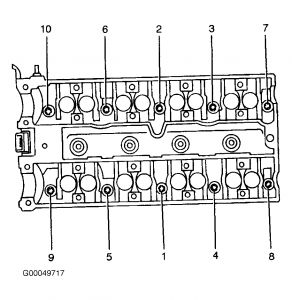

Replace the wires, as needed.Ĭheck the disc brake pads or the drum brake linings every 9,600 km (6,000 mi) or 6 months. Check the wire boot fit at the direct ignition system (DIS) module and at the spark plugs.

Tighten the throttle body mounting bolts to 17 N Sm (13 lb– ft) if necessary.Ĭlean the wires and inspect them for burns, cracks, or other damage. Replace the air cleaner more often under dusty conditions.Ĭheck the torque of the throttle body mounting bolts. Replace the air cleaner element every 48 000 km (30,000 miles). The engine fuel filter is located on the center dash panel near the brake booster. Replace the engine fuel filter every 48,000 km (30,000 miles). Refer to ”Recommended Fluids and Lubricants”in this section. Using oils of any viscosity other than those viscosities recommended could result in engine damage.ĭrain, flush and refill the system with new coolant. Lower viscosity engine oils can provide better fuel economy and cold weather performance however, higher temperature weather conditions require higher viscosity engine oils for satisfactory lubrication. Always use oil rated API–SJ (ILSAC GF–II) or better.Įngine oil viscosity (thickness) has an effect on fuel economy and cold weather operation. The International Lubricant Standardization and Approval Committee (ILSAC) and American Petroleum Institute classifies engine oils according to their performance quality. When a separate belt drives the power steering pump, the air conditioning compressor, and the generator, inspect it for cracks, fraying, wear, and proper tension. Always use the proper fluid and lubricants. When the following maintenance services are performed, make sure all the parts are replaced and all the necessary repairs are done before driving the vehicle. The services listed in the maintenance schedule are further explained below. S To be driven on reasonable road surfaces and within legal operating limits.ĮXPLANATION OF SCHEDULED MAINTENANCE SERVICES S To carry passengers and cargo within the limitation indicated on the Tire Placard located on the edge of the driver’s side door. The maintenance instructions contained in the maintenance schedule are based on the assumption that the vehicle will be used for the following reasons: MAINTENANCE AND LUBRICATION NORMAL VEHICLE USE Vehicle Dimensions – Manual and Automatic


 0 kommentar(er)
0 kommentar(er)
